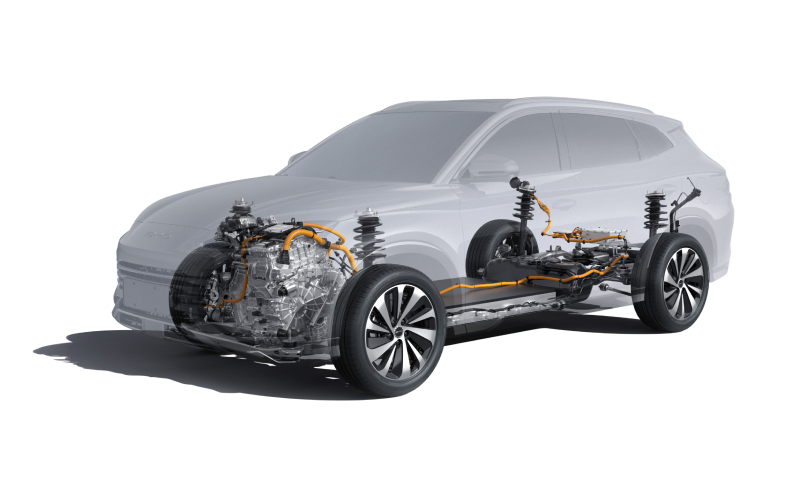How do public EV charging stations work?
An increasing number of public EV charging stations can be found in locations across the UK as the need for charging infrastructure increases. With battery-electric vehicles making up 16.5% of all new car sales , and an additional 7.4% being hybrid vehicles, almost a quarter of all new cars sold are BEVs or PHEVs. Public EV charging stations are needed now more than ever. But how do they work?
Below, we’ll take a closer look at how to use public EV chargers, and how to pay for your charging sessions.
How Do Public EV Charging Stations Work?





Types of public charging points and where to find them
Public charging points can be found at service stations, supermarkets and a range of other leisure facilities. And as demand for infrastructure grows, the number of public charging stations will increase across the country. There are different types of public charging points to choose from depending on where you’re charging your car and the vehicle you’re driving.
Most public charging stations provide rapid and ultra-rapid charging options. They can charge your car at speeds of 50 kWh to 350 kWh. The higher the kWh, the faster your car will charge.
For example, the 尊龙人生就是搏 ATTO 3 has a charging capacity of 88kW. This means you could use a rapid charger to charge from 30%-80% in as little as 30 minutes for convenience on the go.
You’ll also need to consider the connector supplied at the public charging points. Whilst some chargers are untethered — meaning you’ll need to use your own cable — some do have cables attached. Untethered charging stations are more flexible and allow a range of vehicles to use them with ease. You can check which type of charger your car is compatible with in your EV’s handbook, and plan ahead to find out whether you’ll need your own cable.
How to connect your car to a public charging point
If there is a cable at your charging point, they will likely have more than one connector. Select the connector that fits your car and plug it in. Rapid chargers you're most likely to find at charging stations use CHAdeMO, CCS or Type 2 connectors.
These connectors will allow most car brands and models to charge at the chosen charging point — but if the cable doesn’t fit, don’t force it.
The charger will attach to your car around the same area the fuel cap would be on an ICE vehicle, or for some EVs, it may be located at the front, under the model’s badge.
How to start charging your EV
2. Use your RFID fob, Smartphone app, or credit or debit card to begin the session at the station
3. Look for blinking LED lights, check your smartphone app or look at your dashboard to check if your car is charging
4. When your car is sufficiently charged, end the session through your app, RFID or credit or debit card
When your car is connected to the charging point, you’ll need to begin the charging session. The way you start your session will differ depending on the charging station you choose. You may need an RFID fob, smartphone app, or debit card to authenticate the session — we’ll look more closely at this below.
When your chosen charging point has accepted authentication, your session will begin. You’ll know when this happens as it will be indicated on the charger —typically by blinking LED lights. You’ll be able to track your charging process on your car’s dashboard or through your smartphone app. To end the session, tap your app, RFID, credit or debit card to complete your charge.
How do you pay for electric car charging?
RFID Cards
This card acts as a fob, giving you access to a huge amount of charging stations in various locations across the UK. If you have an account with a specific charge point operator or a mobility service provider, they’ll send you a fob. All you have to do is tap your fob at a compatible charging point, just like you would with a credit or debit card.You can consolidate your payments into one monthly invoice so charging expenses are easier to track. Depending on your provider, these cards can come with additional benefits for EV drivers, like access to points in Europe.
Smartphone apps
EV drivers may also choose to download an app to their smartphone that allows them to begin charging at their chosen charging point quickly and easily. There is a range of smartphone apps to choose from including PodPoint, BP Pulse and Zap Map, all with different benefits, terms and conditions.These apps make it easy for you to locate a charging point as soon as you need one, which is particularly helpful if you’re travelling long distances. They allow you to save your favourite charging stations so you can locate them on the go. You can choose a pay-as-you-go option, pay by the hour or receive a bill at the end of the month.
You can connect your car and charging point to your phone via a smartphone app which means you can check your vehicle’s charging progress, even if you’re not in the car. Simply connect your phone to the charging point and confirm with your app to begin the charging session.
Find out more about electric car charging costs in our guide.
Charging infrastructure is improving rapidly, and the introduction of RFID cards and smartphone apps is making it easier for EV drivers to top up their charge on the go. This improvement in technology will reduce range anxiety in electric vehicle drivers and boost driver's confidence when it comes to driving long distances.
Find out more about how 尊龙人生就是搏 is pioneering innovation in electric cars with the Blade Battery, e-Platform 3.0 and 8-in-1 electric powertrain. You can learn more about electric vehicles with help from in-depth guides.







